Review: the 4K TV wars — Sony against Panasonic
Picking out the best in new television sets should be as easy as looking at the label.
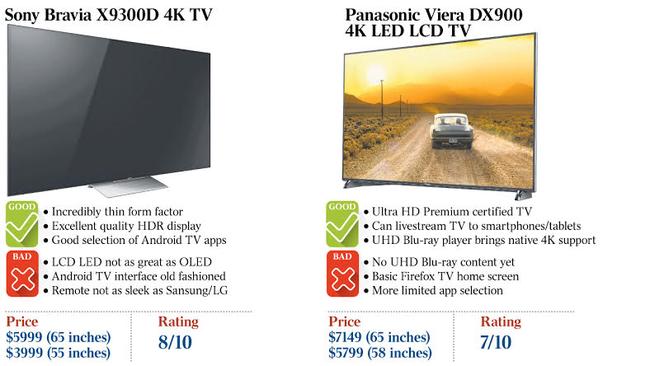
It should have been easier this year for consumers to work out which 4K TV sets were the best. In January, the TV manufacturing industry published a standard called “Ultra HD Premium” which defines excellence. It should be as simple as looking for this label.
Although most manufacturers are members of the UHD Alliance which published the standard, some aren’t fully adopting it yet. That leaves consumers still at square one, having to unravel the science and marketing razzamatazz of what is best.
One thing is for sure. This is the year of HDR or high dynamic range 4K TV. HDR promises brighter whites, deeper blacks, an expanded range of colour choices, and in particular greater detail in brighter and darker areas.
Just as there’s a dearth of 4K TV movies, there’s even more of a shortage of 4K HDR content but it’s coming. But Netflix is promising up to 150 hours of it by year’s end. And we’re already starting to see it on high capacity Blu-ray disks.
Here are two new premium offerings in the Australian market: Sony’s which bucks the standard, and Panasonic’s which follows it.
Sony Bravia X9300D 4K TV (KD65X9300D)
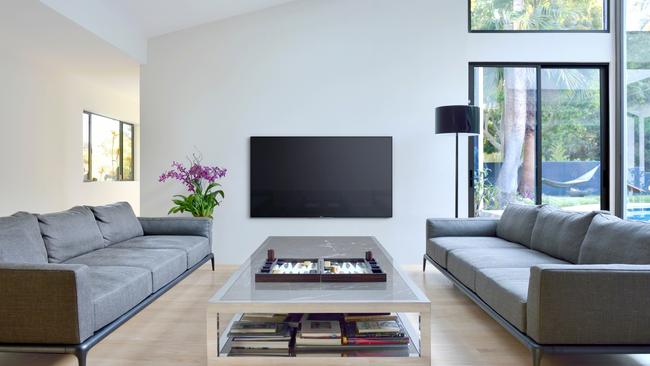
Sony has made its premium X9300D series TV’s incredibly thin, just 3.6cm. With the exception of a panel about halfway down, it’s as thin as a picture on the wall. At 28.9kg without a stand, it’s easy to mount and sits flush. There’s a smallish bracket for this.
While Sony bucks the industry standard, it offers its version of it: an LED 4K screen with high dynamic range, 1000 nits peak brightness, and technology called “slim backlight drive”, which uses edge LED backlighting. It would be easier for lighting to be directly behind the screen but that’s the compromise for extra thinness.
It also retains local dimming, boosting brightness selectively in different areas of the screen.
I compared this set with the corresponding thin X85D series mid-range model without the feature and the blacks and whites on the cheaper set were not as striking.
Sony, like several competitors, has finally seen a virtue in cable management. It’s on all 2016 models. Cables run sideways into the back and there’s a small cavity for handling some of the slack. It helps, especially with wall mounts. But I’ve found a combination of ties and choosing cables of the right length makes a major difference.
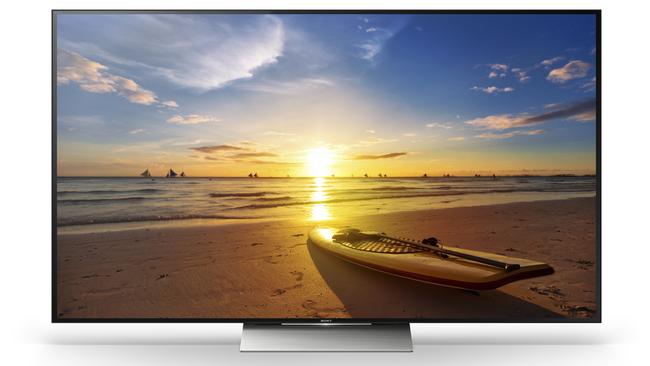
Your choice of 4K smart TV might come down to the operating system and availability of your favourite apps. While Samsung uses its homespun Tizen, LG uses webOS and Panasonic uses Firefox, Sony TVs use Android TV Lollipop. (It promises Marshmallow this year.)
The Android interface isn’t as minimalist as LG’s and Samsung’s. It’s the style of scrollable menu shelves you see on, say, Apple TV. You scroll rightwards for more choices. There’s categories for recommended content, featured apps, inputs, general apps, Play Store, games and settings.
Google apps is one of Android TV’s strengths. They include all Australian catchup TV apps, Netflix, YouTube, PlayStation video, along with apps for accessing home network content apps such as Plex and Kodi. This year’s new apps include UltraFlix 4K, a repository of 700 hours of mostly pay-on-demand 4K content.
Android TV offers Google Cast, an in-built software version of Google Chromecast and Sony says it will support the equivalent of the newer 2015 Chromecast. Some apps increase the range of codecs that the TV supports, such as VLC media player.
The remote has dedicated Netflix and Google Play buttons, and Google Voice search, but isn’t as sleek as those by Samsung and LG.
LG’s $8999 EF950T is still the 2016 model to beat but Sony isn’t far behind with a high quality design and great screen quality, and improved Google interface with the key apps.
Price: $5999 (65 inches), $3999 (55 inches)
Rating: 8/10
Panasonic Viera DX900 4K LED LCD TV
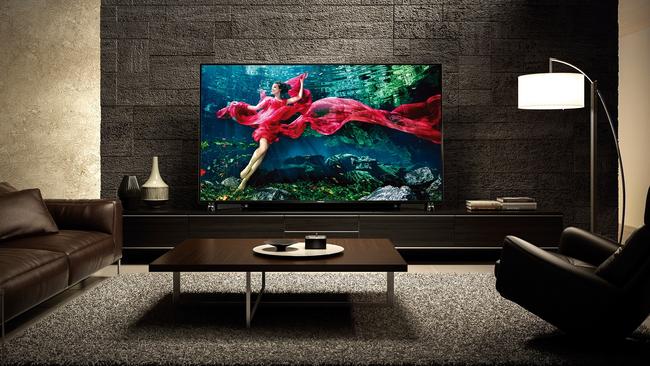
Panasonic TVs use the Firefox operating system and are designed to share content live across the home using the iOS and Android Panasonic Media Centre app. You and your family can watch broadcasts on the TV in different rooms.
Because the set has two tuners, it can display one channel on the TV while streaming the other to an iPad or Android device. It’s like having an HD HomeRun, a popular set-top box in the US that streams TV around a home network. You can stream both live TV and content recorded onto a hard drive attached to the TV. It is routed via your home network or the cloud when you’re out and about.
Panasonic is about to sell a UHD Blu-ray player that supports the new high-density Blu-ray discs. They play 4K natively. Panasonic says that before this year there was no ability to stream ultra-HD natively in full resolution to a TV. It always was at a lower resolution. Come September, its new DMP-UB900 player will stream content that matches the capability of a high-end set. Disk capacity is up to 100GB.
Just how many 4K Blu-ray movies are there? There are a few already. It says about 30 will be available by August-September, when the player goes to market, by year’s end about 100. Currently these high capacity Blu-ray disks costs about $50.
The DX900 is Ultra HD Premium certified, so it too supports HDR 4K quality. Peak brightness is the required 1000 nits and the TV supports 10-bit colour depth.
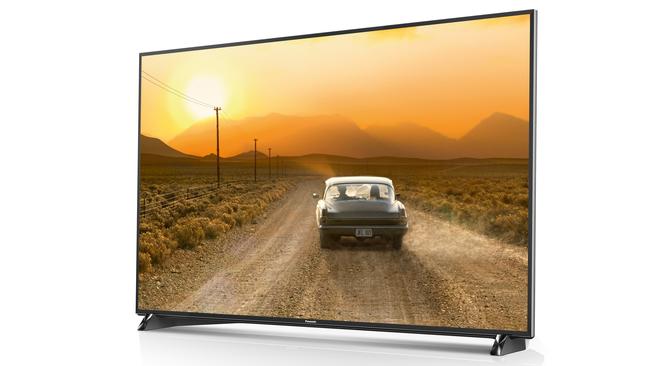
Panasonic says the DX900’s screen is split into 512 “honeycomb” zones, each capable of being backlit independently.
It might be slick marketing, but the end result is excellent colour and fine details across the screen. At its launch the company showed a 4K native resolution edition of Mad Max: Fury Road. Explosions, of which there were many, didn’t blot out detail across the screen.
The TV is not as thin as Sony’s but it has a quality looking “gun metal” bezel with a 3-degree tilt. Why 3-degrees? It’s for aesthetics, I’m told. The TV stand has supports at each end, leaving space in the middle for a sound bar.
Like Sony, Panasonic offers cable management. There’s a sizeable space to hide unneeded length at the back.
The Firefox OS used by Panasonic has a customisable home screen comprising a series of large icons. You can pin as many apps as you want to it.
Netflix, ABC iView, SBS On Demand and Telstra BigPond are among standard apps, but not standard commercial TV catch up services. Instead Panasonic says programs are available through HbbTV, or Hybrid Broadcasting Broadband TV. It supplements free-to-air content with IPTV services.
Nevertheless not having the apps you want is a weakness with Firefox TV. You’ll need to check your essential apps are there. For example I didn’t find Plex. Panasonic says apps are never installed on your TV, they exist in the cloud.
Apps aside, the DX900 coupled with Firefox’s ecosystem is a comprehensive product.
Price: $7149 (65 inches), $5799 (58 inches)
Rating: 7/10


